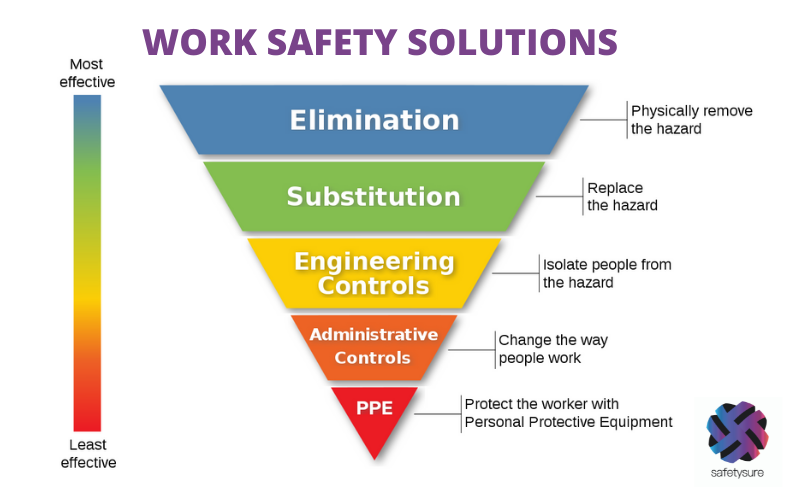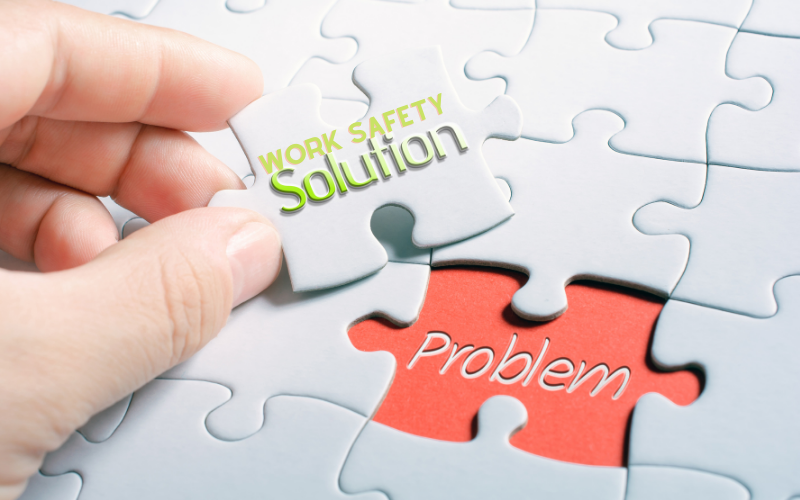Work safety solutions
Finding the right work safety solutions can be a challenging aspect of managing work health & safety risks at your business. Experience tells us that there is no one solution that fits every situation. But what are the drivers for finding the right work safety solution for your business? In this article, we explore some important aspects of work safety solution decision making and seek to help readers define what drives sound work safety decisions.
What does the regulatory environment require?
Often work safety and health regulatory requirements may drive decisions for work safety solutions. In many jurisdictions globally, prescriptive regulations may drive the minimum compliance requirements. For example, in high-risk industries like coal mining, some prescriptive regulations exist around minimum permissible gas concentrations. In the construction industry demolition scaffolding, plant and equipment operation is specifically regulated.
Regulators often require minimum standards of practices and equipment for monitoring these gas levels. So prescriptive requirements dictate your work safety solution. In lower-risk industries, regulatory requirements are often less black and white, and a solution may involve interpreting regulations, codes, and standards.
In principle, it is important to ensure that you understand the implications of regulatory requirements in your workplace safety solution decision-making process.
You might like to read Tips to keep ahead of the work health & safety Act
Are there any standards, codes of practice that might apply to the solution?
Codes of practice or standards exist across jurisdictions within Australia and internationally and can often be called upon by regulators as a means for justification of regulatory actions. So, like regulations, you must understand if there are any standards or codes of practice that apply to the risk that you are trying to manage at your business. Standards and Codes of Practice can define methods for controlling risks and subsequently can drive your work safety solution.
What is the best work safety solution for my business?
Business owners need to consider many other issues in addition to regulatory requirements for decision making for work safety solutions. These include available finances to provide the most effective work safety solution, the owners or business’ appetite for managing the risk, the potential reputational damages for not managing the risk appropriately, the culture of the business, the tangible and intangible benefits to employees from taking (or not taking) a stand on risk, whether the solution might be able to control or remove the risk permanently.
Types of decisions that businesses or business owners may need to make include:
- Strategic decisions
- Tactical decisions
- Operational decisions
- Contingency decisions.
What work safety solutions are available for businesses?
That’s a challenging question! This can be influenced by many factors discussed above. Ultimately, we always recommend that you take a rational approach[1] to the provision of the best work safety solution to suit your business needs.
- Identify the problem
- Generate a set of options or possible solutions based on best practice examples
- Evaluate each option (using a wide range of strategies)
- Select and implement the best option
Of course, this process can be influenced by many factors including the risk perceptions of the decision-making individual so it may be of value to form a team when it comes to deciding on the best work safety solution. Be wary though of Groupthink when it comes to this!
The process of finding the best work safety solution is typically supported by the standard hierarchy of controls. The hierarchy of controls includes the elimination of the risk, the substitution of the risk with a less hazardous one, engineering solutions that control the risk, administrative controls such as competency of staff/ rostering/procedures and finally the use of personal protective equipment.

Solutions ultimately need to be based around the risks encountered and be relative to the legal. ethical and moral constraints placed upon the organisation or the decision-makers.
Can a consultant add value to finding work safety solutions for your organisation?
The short answer is yes. Consultants are often not constrained by the chains that bind organisational practices/thinking and can test the initial decisions, think of the decisions in new ways, and minimise the amount of effort an organisation take to find the right solution. Effective work safety consultants assist organisations to think outside their organisational paradigms and base solutions on practice that the organisation may be unfamiliar with.
Above all its important for any person seeking to find the right work safety solution to
- Clarifying the WHAT. It is important to know exactly what the decision to be made is about. Is a yes/no required or is it a choice between options?
- Determining the WHO. The roles in the decision-making process need to be clear. Who will make the recommendation? Who will make the decision? This understanding is essential for the successful integration of risk into the decision process.
- Understanding the HOW. Is the decision to be made by consensus or by one person? This will influence the information to be provided and the way the information is presented.
- Knowing WHEN. Every major decision needs a timetable or deadline, and a schedule that ensures follow-up action. (Blenko et al., 2013)[2]
In this article, we examined some of the factors associated with finding the right safety solution for business. It’s fundamentally important that businesses consider the regulatory environment in which they are operating and if any standards codes or other documents can provide advice about the right solution.
You might like to read Safety Consultants, the who why where and when!
Summary
We also explained the importance and limitations of decisions in an organisational context and discussed the value that external parties to businesses can play in finding solutions. If you need assistance in providing support for your work health and safety solutions, why not call our friendly team at Safetysure on 1300 087 888 or chat with us below.
[1] Flin, R. (1996). Sitting in the hot seat: Leaders and teams for critical incident management.
West Sussex, England: John Wiley & Sons.
[2] Blenko, M. W., Mankins, M. C., & Rogers, P. (2013). Decision Insights: The Five Steps to Better Decisions. Retrieved fromhttp://www.bain.com/Images/BAIN_BRIEF_Decision_Insights_The_five_steps_to_better _decisions.pdf.
An acceptable work safety solution is a measure that removes or mitigates risk to an acceptable level. These acceptance levels may be determined by means of minimum governmental regulations, socially accepted standards for the management of the risk. The implementation of a workplace safety solution should be based on the concept of reasonably foreseeable risk and what a court of law would believe a reasonable person would do to manage that risk.

